Ta Prohm emerged from the Cambodian forest about an hour’s drive out of Siem Reap, and immediately we knew it was special. Towering trees sprawled protectively over the ancient temple ruins. Groundwater lay all around from the recent monsoonal rains. It looked like a scene from a movie, and it was easy to have visions of being an Indiana Jones or a Lara Croft intent on securing some ancient treasure. But what really struck me, was that this complex of buildings came from the hands of highly skilled architects within a well-resourced advanced society. I found a spot out of the way of the tour groups, behind what had once been a monastery library, and began sketching.
Just a year before Saladin captured Jerusalem from the Crusaders, this monastery complex was built and dedicated by King Jayavarman VII near Angkor in honour of his mother. It was to become an important pilgrimage site. The year was 1186, and Jayavarman was on an unprecedented building spree.
He recognised that a united country needed to be a connected country. But the land he inherited was subject to flooding in the wet season, and despite Angkor Wat and the royal palace being above the high water mark of the inland sea known as the Tonle Sap, it was difficult to maintain year-round communication.
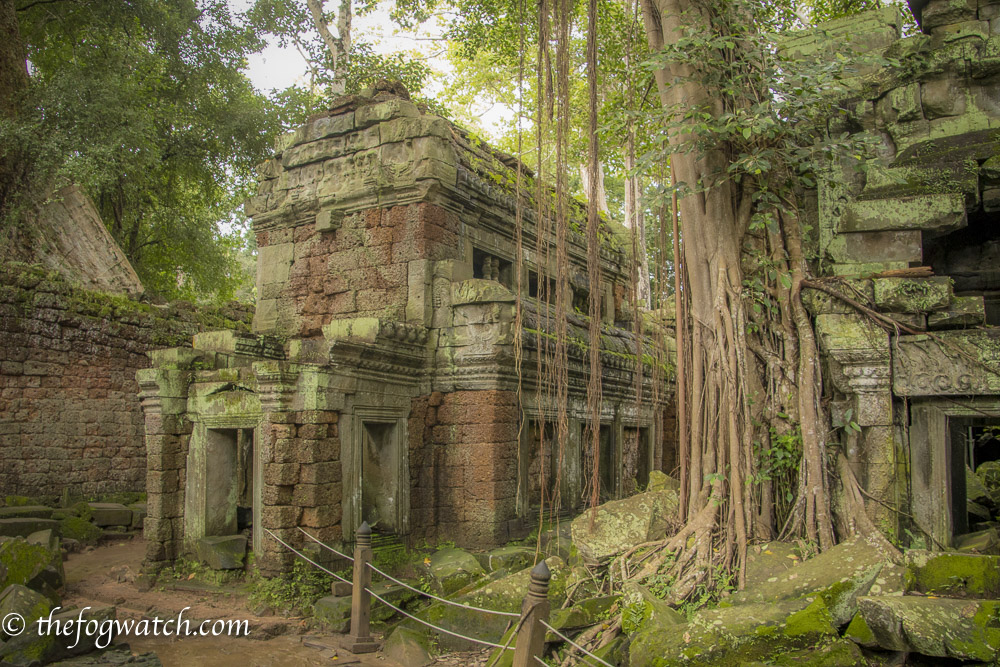
To facilitate the communication of people and administration (including taxes/tributes), he built over 2,000 km of roads above the high-water level, and set up rest houses – every 15kms (one day’s walk), along with hospitals equipped to minister to the sick. The hospitals had shrines made in the Mahayana Buddhist tradition. The sanctuaries of the rest houses may correspond to some of the buildings found within the major temple sites, such as Ta Prohm.
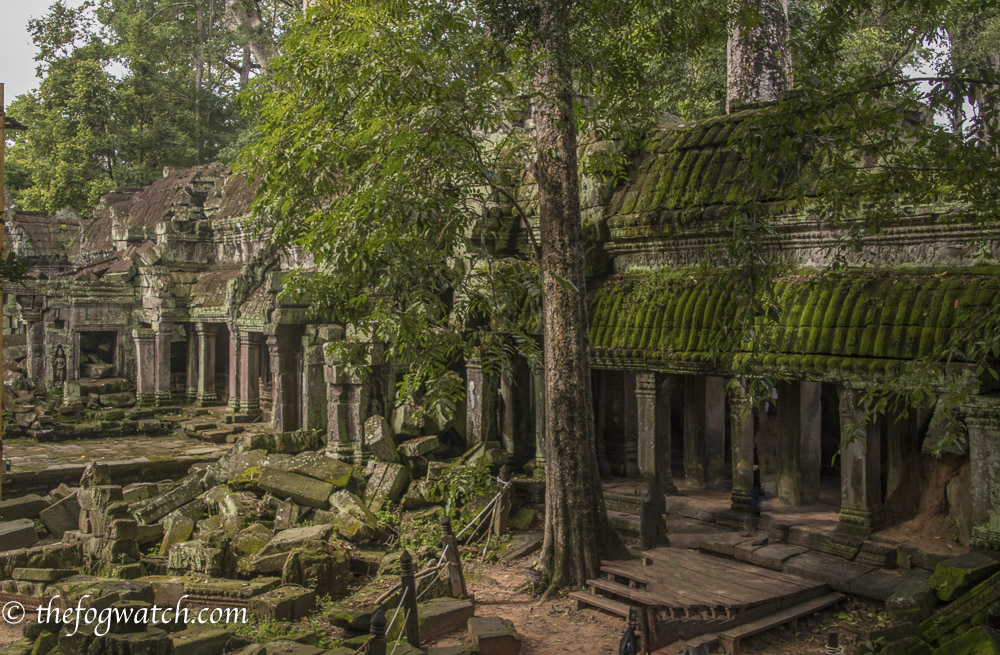
They are extraordinary structures, built with corbel-vaulted roofs capable of supporting heavy stone coverings.
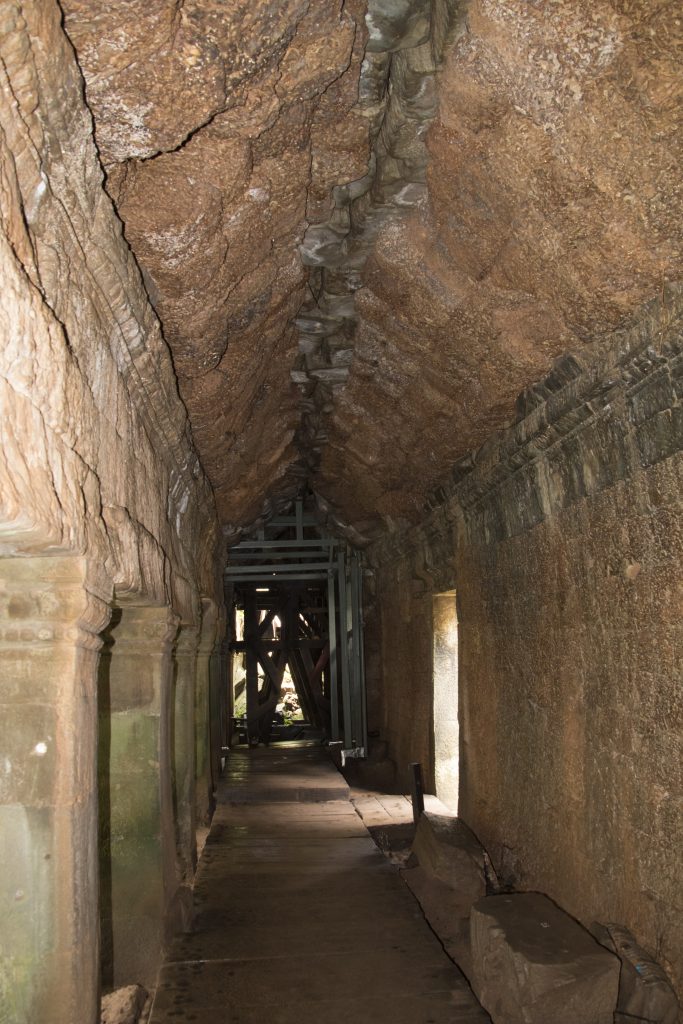
The ones in Ta Prohm were deliberately left largely as they were found, with great Spong trees and their parasitic strangling ficus (fig) which gradually encapsulates the tree and kills it. The ruins, symbiotically interwoven with the majestic trees – the age-old struggle between nature and culture – made it the perfect setting for an epic movie adventure. More recently, substantial restoration work has been undertaken by an international partnership through UNESCO. Nevertheless, you can still locate recognisable parts of the site as seen in Lara Croft: Tomb Raider. The movie mythologises the role of amateur and dilettante archaeologists hoping to fill the museums of Europe with strange and exotic artefacts.
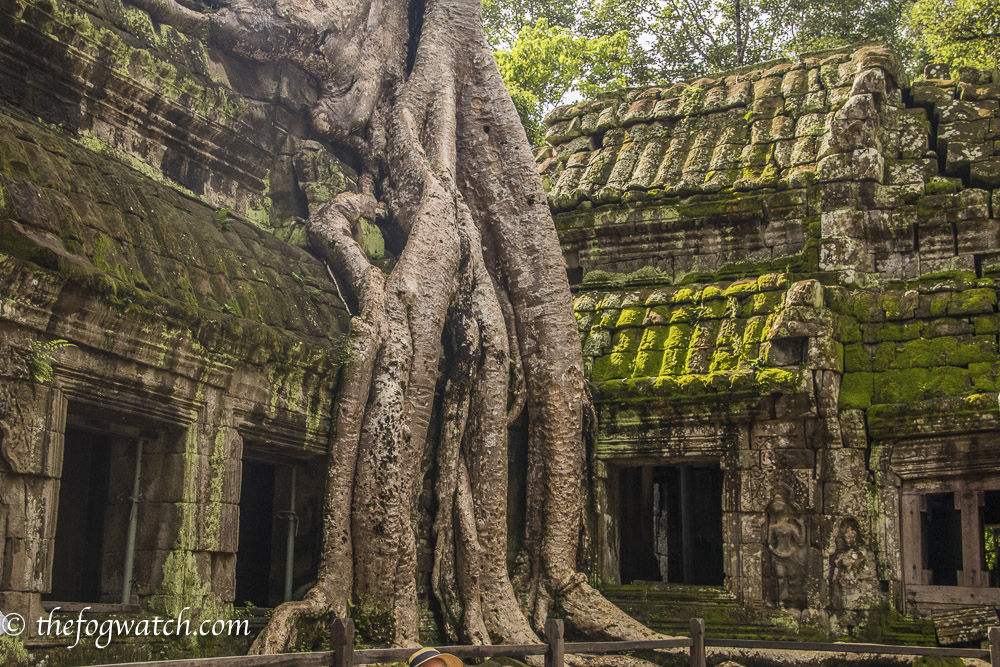
For me, the reality was far more interesting than any swash-buckling movie adventure could be. The temples and associated monastery tell a story of devout Buddhists. The wall carvings included detailed dancers and scenes from Buddha’s life. During the period of the Hindu reaction, some panels depicting Buddha were mistaken for a king in his palace, and so were spared erasure.
Ta Prohm was one of the largest monastic complexes in the Kingdom, with quarters for more than ninety monks. One of the devotional statues was captured by one of the many great tree roots.
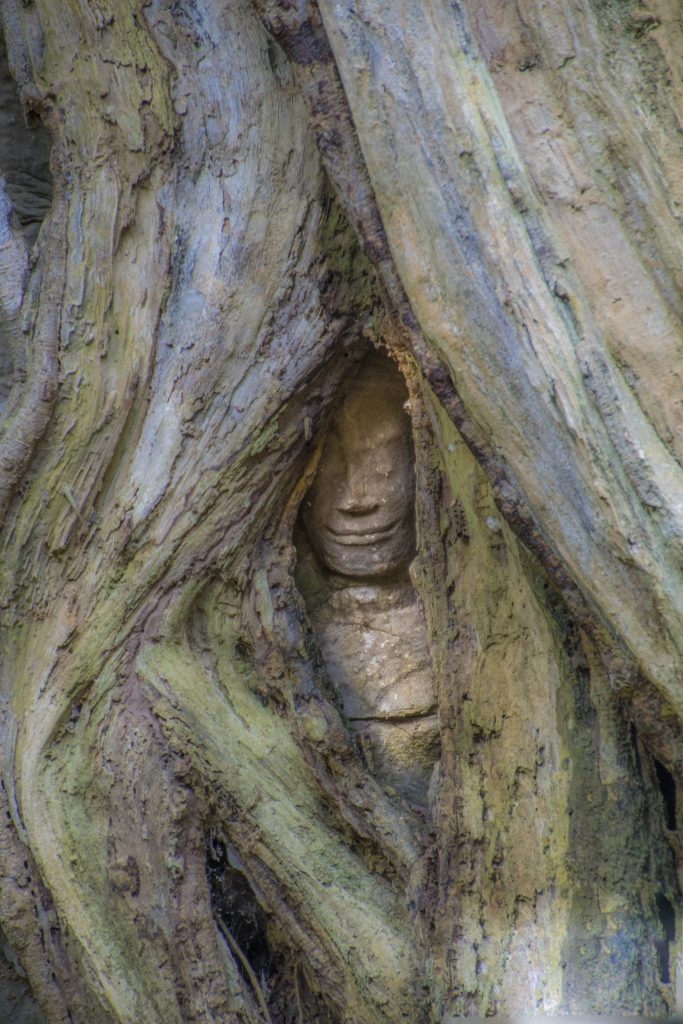
Much of what we know of early Khmer culture came from the travel reports of Zhiou Daguan a member of a Chinese diplomatic delegation in 1296. He was sent by the Yuans, a Mongol dynasty established by Kublai Khan. The document that resulted gave a detailed snapshot of life in the Angkor kingdom at the end of the C13th.
Western accounts began to surface in the 1500s by Portuguese and Spanish missionaries of an ancient city in the jungles of Cambodia. The stories relate how king Ang Chan stumbled across the Angkor ruins – already covered by dense vegetation – while out hunting wild elephants in the forest.
Then in the 1860s research began in earnest with a French scientific expedition to see if the Mekong was navigable, and they took a detour to Angkor, making an extensive survey.
I was glad I started with this temple, and built up to the larger ones as I started to put together a picture in my own mind of how these sites relate to each other, and how this was indeed a civilisation that was built on advanced hydrography.But more on that in a later post…

In Brief:
Country: Kingdom of Cambodia
Language: Khmer
Currency: Riel (but almost everything is done in $US)
International phone code +885
Where I stayed: Central Suite Residence, Siem Reap
Getting there: direct flights are available to Siem Reap International Airport from Bangkok, KL or Singapore.
What to see: Ancient temples, including Angkor Wat, and don’t forget the Angkor National Museum.
________________________________________
Why not have these posts delivered to your in-box? Just enter your email address and click the ‘subscribe’ button in the left margin, and don’t forget to respond to the confirmation email in your in-box 🙂 And of course ‘like’, share and subscribe using the buttons below!
________________________________________

Thank you Jerry for the great report and wonderful photos!
Thanks Anneliese – it was a wonderful trip – and there’s more to come on these amazing sites
Thankyou for another valuable history lesson Jerry…one I both enjoyed reading and also seeing the photos shared. An amazing place.
Thanks Susan I always love to dive in a bit deeper into why these places exist where they are, and how they came to be 🙂